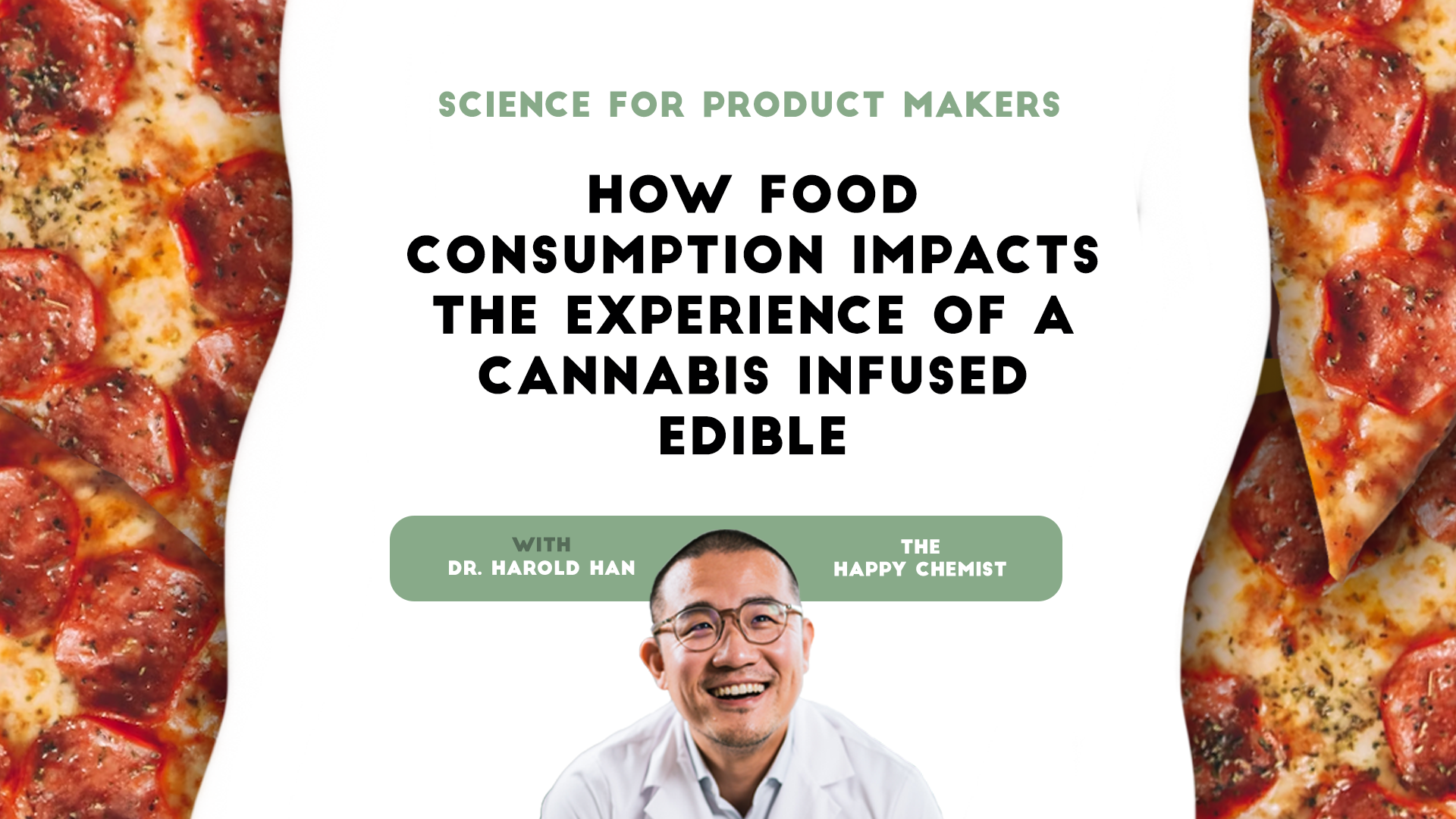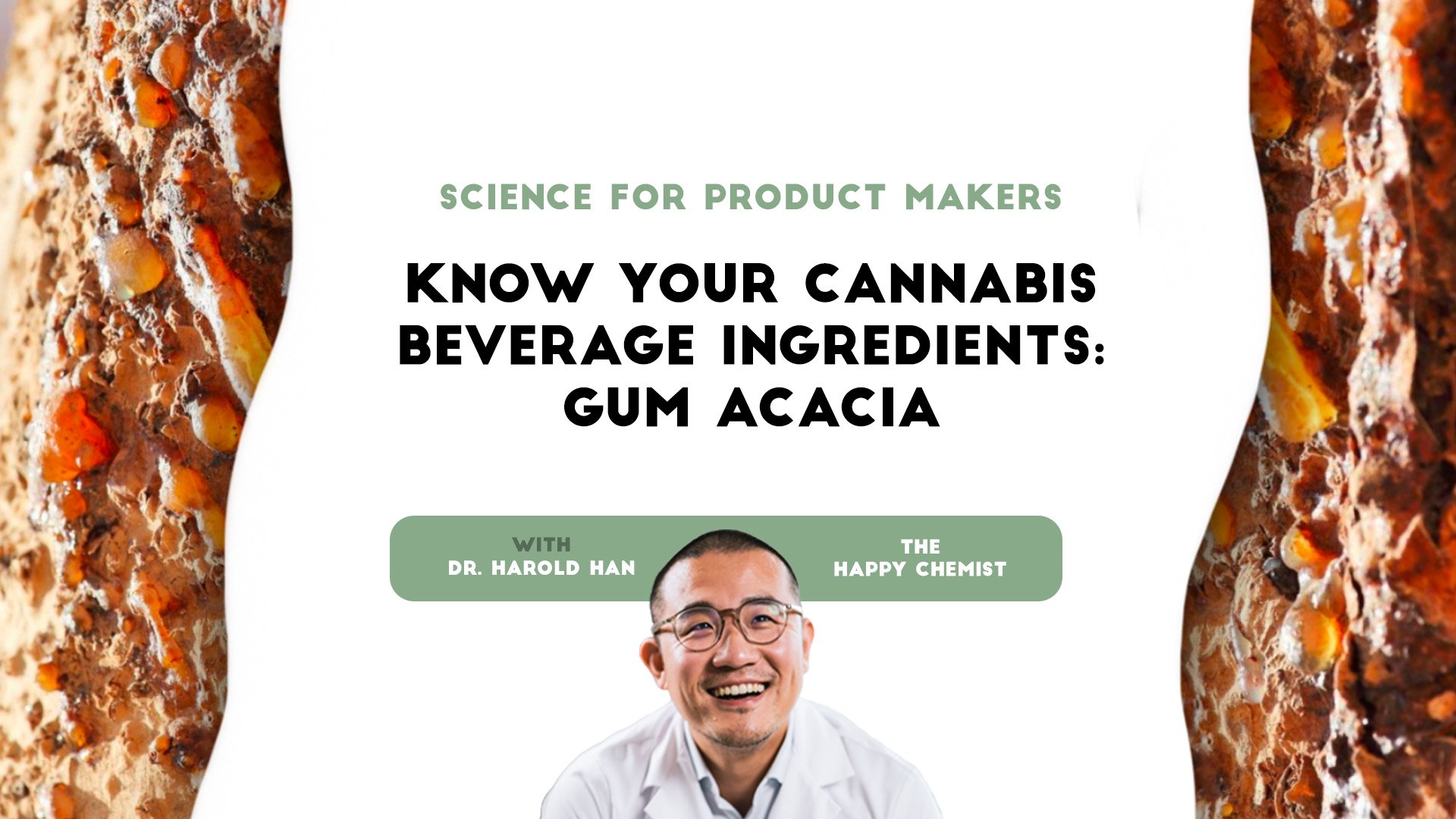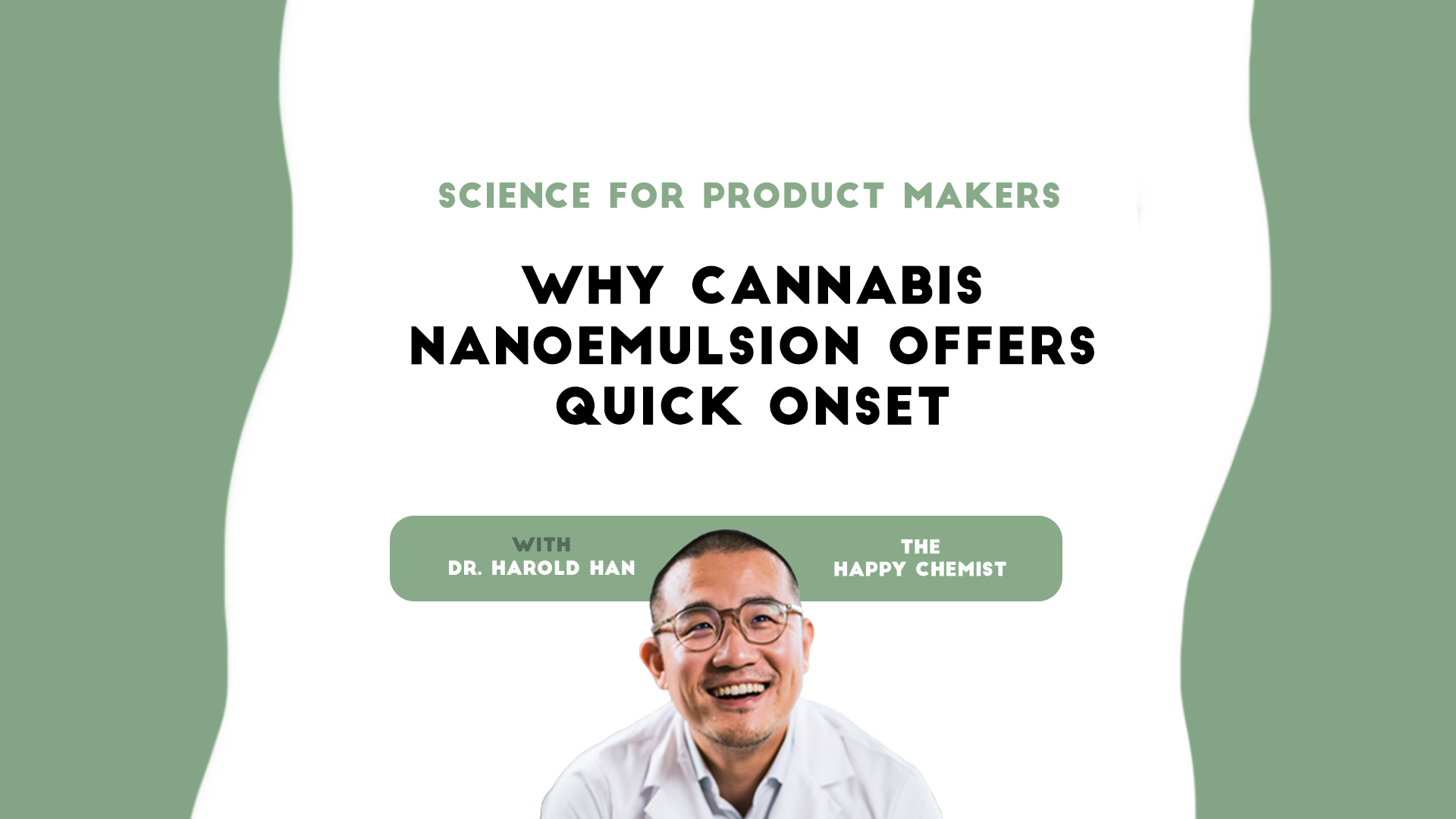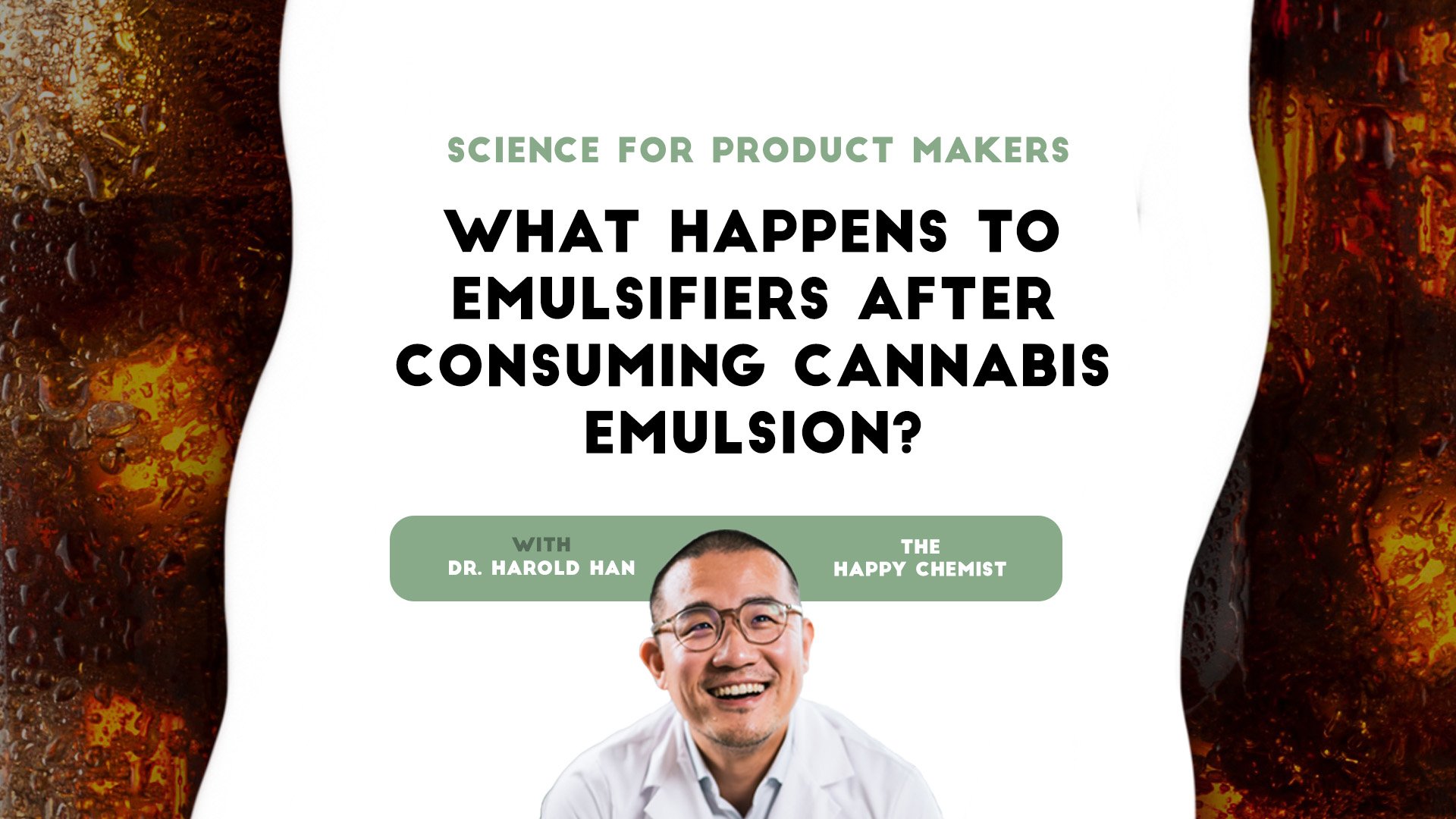Science for Product Makers - Know your cannabis beverage ingredients: Gum Acacia
This post is also published as an article on Harold's LinkedIn profile. You can read and leave comments here.
3 min read
 Dr. Harold Han - "The Happy Chemist"
:
6/28/24 3:49 PM
Dr. Harold Han - "The Happy Chemist"
:
6/28/24 3:49 PM

This post is also published as an article on Harold's LinkedIn profile. You can read and leave comments here.
We often hear rumors in the cannabis industry claiming food consumption can intensify the experience of a THC edible. I recently performed a poll and results are quite interesting:

The results definitely did not simplify things, so what exactly is the relationship between eating food and the experience from THC edible?
Scientifically, we have proven that eating food increases cannabinoids’ total absorption. In a pharmacokinetic (PK) study, total absorption is reflected by Area Under the Curve (AUC). As shown in this study, the same CBD formula had much higher AUC when consumed with food. This is direct evidence proving food consumption can boost total cannabinoid absorption. But why?

In the PK study, the same CBD formula had a much higher AUC when consumed with food.¹
In my first post, we discussed that cannabinoids need to be transformed into mixed micelles, which are vehicles that carry them to the walls of the small intestine where they can be absorbed. Simply put, more mixed micelles for cannabinoids = higher absorption.
Mixed micelles are assembled by 4 key ingredients: bile salts and phospholipids produced by the body whenever we eat food + free fatty acids and monoacylglycerols from lipid digestion of the fat part of the food (oil, butter, meat…).
So when we eat food, especially fatty foods, all 4 key ingredients accumulate in the small intestine, which leads to the formation of more mixed micelles, thus increasing the total absorption of cannabinoids.
Now, we have direct evidence from PK and a clear mechanism to explain why eating (fatty) food could help boost absorption of cannabinoids. Let’s go back to the poll: Why do so many consumers not feel an intensification of the THC experience when eating food? In fact, some even feel a reduction!
Here are a few variables that may be worth discussing:

The formation of mixed micelles depends on the fat content of the food we consume.
Mixed micelles need free fatty acids and monoacylglycerols as key ingredients, which mainly come from the fat we consume. If the fat content in food is low, it may not help THC absorption as much. This may explain why some people did not have the intensified experience. Who's up for a pizza vs salad test to prove this hypothesis? (Ping me)

Harold's hypothesis: Food type & amount affects the THC edibles experience.
Let’s assume, after consuming a THC edible, you had 2 slices of pizza, which provides all the ingredients to form mixed micelles. But what if you had 6 slices of pizza? Since the amount of bile salts and phospholipids produced by our bodies is limited, they may get totally used up to absorb the fat from the excessive amount of fat content in the food. This leaves less for the formation of mixed micelles for THC, leading to lower THC absorption. This may explain why some people feel food actually reduces the psychoactive experience.

Genetics plays a crucial role in a person's THC experience.
Our genetic differences add another layer of complexity. For example, certain people’s liver enzyme activity dramatically speeds up when eating certain foods, thus metabolizing THC quicker. Some people may have gallbladder issues where releasing bile salts can be a problem. And some people with certain genetics can not feel edibles at all, which I will discuss more in future posts.
Since cannabinoids are hydrophobic (fat soluble), they need to be processed into mixed micelles to be absorbed. Eating fatty food provides key ingredients for mixed micelles formation, generally boosting cannabinoid absorption. But food fat content, food amount and genetics are important factors impacting the experience from a THC edible.
Do you have other hypotheses and ideas about my poll results? Feel free to leave me a comment!
Dr. Harold Han — the “Happy Chemist” — combines his storied background in emulsion chemistry and science with curiosity and fascination in the rapidly growing cannabis industry. Developing nano and micro emulsions his entire career, Harold holds a Ph.D in Surface Chemistry from NYU and is the inventor of multiple patents in emulsion chemistry.
As the Chief Science Officer at Vertosa, Harold spearheads the company’s development of industry-leading and customized active ingredients for infused product makers, offering pre-suspended aqueous solutions to create incredibly homogenous and stable products while maximizing bioavailability, clarity, and taste.
To learn more about the science of cannabis, check out Harold’s Happy Chemist videos.
References
¹Abbotts, Kieran Shay, et al. “Cannabidiol and Cannabidiol Metabolites: Pharmacokinetics, Interaction with Food, and Influence on Liver Function.” Nutrients, vol. 14, no. 10, 2022, p. 2152., https://doi.org/10.3390/nu14102152.

This post is also published as an article on Harold's LinkedIn profile. You can read and leave comments here.

This post is also published as an article on Harold's LinkedIn profile. You can read and leave comments here. Our industry generally agrees that...

This post is also published as an article on Harold's LinkedIn profile. You can read and leave comments here. Have you wondered where the...